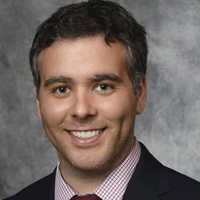
Permanent life insurance can be a valuable tool for small business owners in cases where an owner wants to leave the business to a child who is actively involved in the company, but may not have other sufficient assets to leave to the remaining children. This situation often arises in cases where the business constitutes the largest portion of the owner’s net worth and the owner wants to leave an equal inheritance to the children.
This article illustrates how a permanent insurance policy with a guaranteed death benefit can provide flexibility for a small business owner with this estate planning dilemma. It’s not intended as an analysis of the different types of permanent insurance or to endorse a particular product.
Consider the following example. Olive, age 60, owns a small business valued at $600,000. She plans to retain ownership of the company for the foreseeable future. Olive’s remaining assets include a residence, bank accounts and non-qualified investment accounts that have a combined value of $1 million. Olive has no liabilities. Therefore, her net worth is $1.6 million.
Olive has 3 children: Alex, who is actively involved and would like to take over the business; and Brooks and Charlie, neither of whom has an interest in the business. Olive would like to leave the business to Alex, but would also like to leave an inheritance to Brooks and Charlie that is equivalent in value to that of Alex’s inheritance. Unfortunately, in this scenario, she would be unable to do so if she leaves the business to Alex, because Brooks and Charlie would each inherit assets valued at only $500,000 while Alex would inherit the business valued at $600,000.
Flexibility to Achieve Objectives
One solution could be for Olive to purchase a permanent life insurance policy with a guaranteed death benefit — assuming she is healthy enough to qualify and can afford the premiums. In this case, term life insurance may not be the most effective solution because Olive could outlive the term of the policy. Should that occur, there would be no death benefit to achieve her objective of leaving Brooks and Charlie an inheritance equal in value to the one left to Alex.
Let’s assume that Olive qualifies, and has the requisite cash flow to finance the premiums, for a policy that includes a guaranteed death benefit of $1.2 million. When she purchases the policy, she names Brooks and Charlie as equal beneficiaries. In addition, Olive has executed a last will that states Alex will receive the business, and the remaining assets will be split equally among the three children. In this scenario, if Olive were to pass away, Brooks and Charlie would each receive $600,000 as beneficiaries of her life insurance policy. Pursuant to Olive’s last will, Alex would inherit the $600,000 business, and the three children would split Olive’s remaining assets equally. As a result, each child would inherit $933,333 worth of assets ($600,000 + $1,000,000/3).
The proceeds from the death benefit of the insurance policy gives Olive the flexibility to achieve both of her primary objectives: Leaving the business to Alex and providing an equal inheritance to Brooks and Charlie.
This scenario illustrates a simple situation in which a permanent insurance policy with a guaranteed death benefit can be used to equalize the inheritances of children who will not inherit a parent’s small business, while also allowing another child who actively participates in the business to inherit an equal value.
Of course, the above scenario is very straightforward; our clients’ cases are typically more complicated. Not only may their personal objectives change over time, but the value of their assets — especially small businesses — may fluctuate. Fortunately, practitioners can finetune a client’s estate planning documents to take these fluctuations into consideration.
Incorporating a Revocable Trust
One solution, for example, could be for Olive to establish a revocable estate planning trust, and name the trust as the beneficiary of the life insurance policy. In addition, the provisions of her trust could state that the trustee will obtain an independent appraisal for the value of the business that will be left to Alex, and thereafter allocate the life insurance proceeds and the trust’s remaining assets so that each child receives an equal inheritance.
Let’s use the same example but with different values to illustrate.
During her life, Olive established an estate planning trust, to which she transferred ownership of the business and her remaining assets (residence, bank accounts and non-qualified investment accounts). At the time of her death, the value of the assets owned by her estate planning trust were as follows: the business, which had increased in value to $850,000 (based on the trustee’s requirement to obtain an independent appraisal); the residence, bank accounts and non-qualified investment accounts, which had decreased in combined value to $800,000; and the insurance proceeds of $1.2 million. The combined value of the trust assets at Olive’s death was $2.85 million.
As mentioned, the terms of Olive’s trust required an appraisal of the business in order to account for the fluctuating value. The terms also provided that Alex would inherit the business, and that the remaining assets would be distributed in a manner that ensured each child would receive an equal inheritance. Accordingly, Alex would receive the business (worth $850,000) plus $100,000 of the remaining trust assets for a total of $950,000. Brooks and Charlie would split the remaining $1.9 million of trust assets so that each receives $950,000. Each child, therefore, receives an inheritance valued at $950,000.
Additional Reading: How Unequal Inheritances Can Tear Siblings Apart
Putting it All Together
The point of the above example is that permanent life insurance that includes a guaranteed death benefit, in conjunction with a properly structured estate plan, can be used to ensure each child receives an equal inheritance even when one of the children inherits complete ownership of a small business — and even if the values of the client’s assets change over time.
Not only does the above structure offer simplicity and flexibility, it also allows small business owners to avoid undesirable results that unfortunately occur all too often, such as gifting or selling the business during life to the child who is actively involved. Although these strategies may be appropriate in certain situations, they are often done without sufficient advice, resulting in adverse and unintended tax or financial consequences.
As advisors, it is crucial that we understand our client’s unique objectives, and use all of the tools at our disposal to achieve those objectives in the most efficient and effective manner possible. Permanent life insurance with a guaranteed death benefit should be one of the tools we consider for clients with small businesses.
Matthew Guanci, who holds an LL.M in taxation and estate planning, established Boston-area Guanci Law in 2018 after working for several boutique law firms as an estate planning and tax law specialist. He can be reached at matthew@guancilaw.com.







